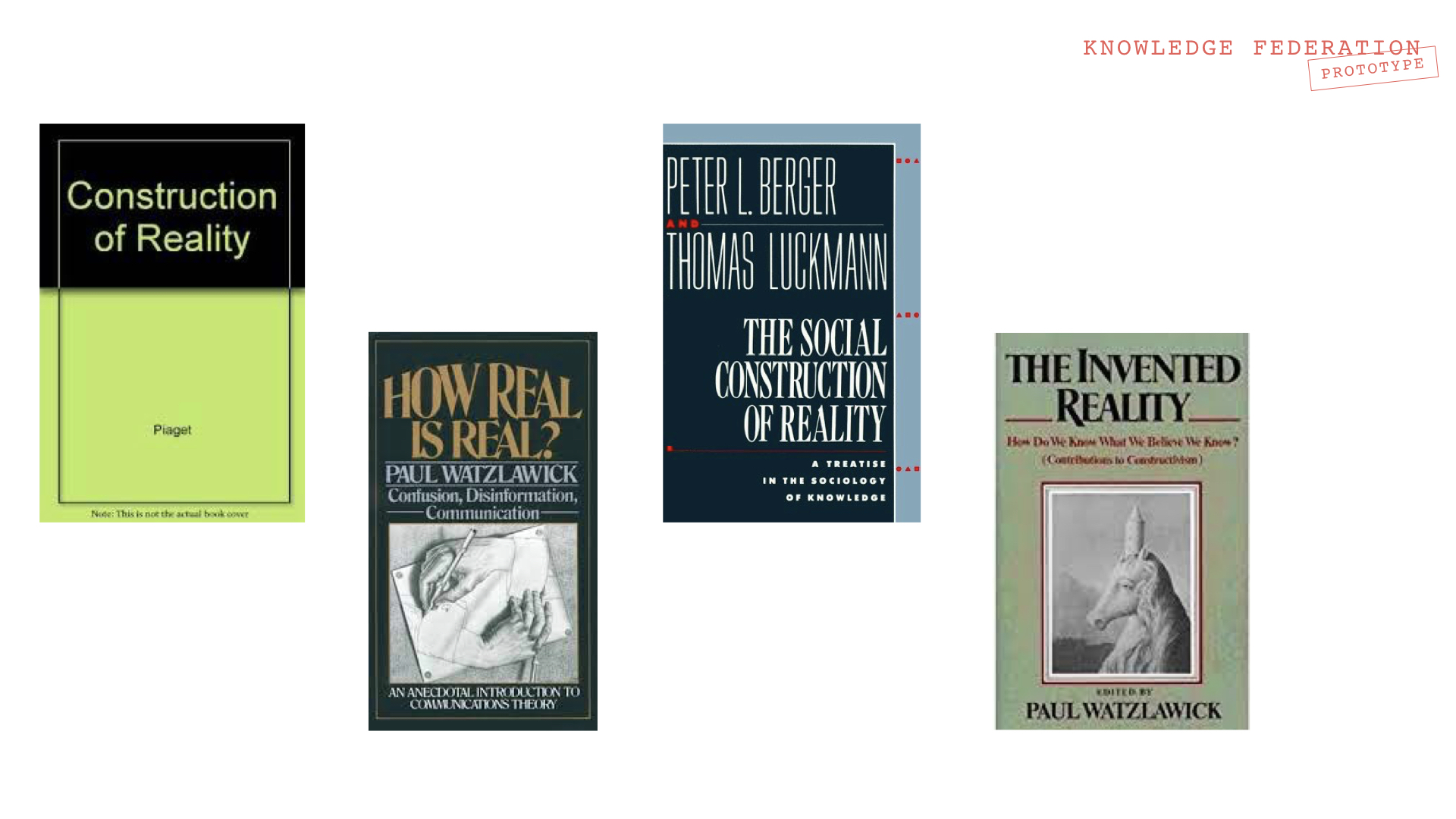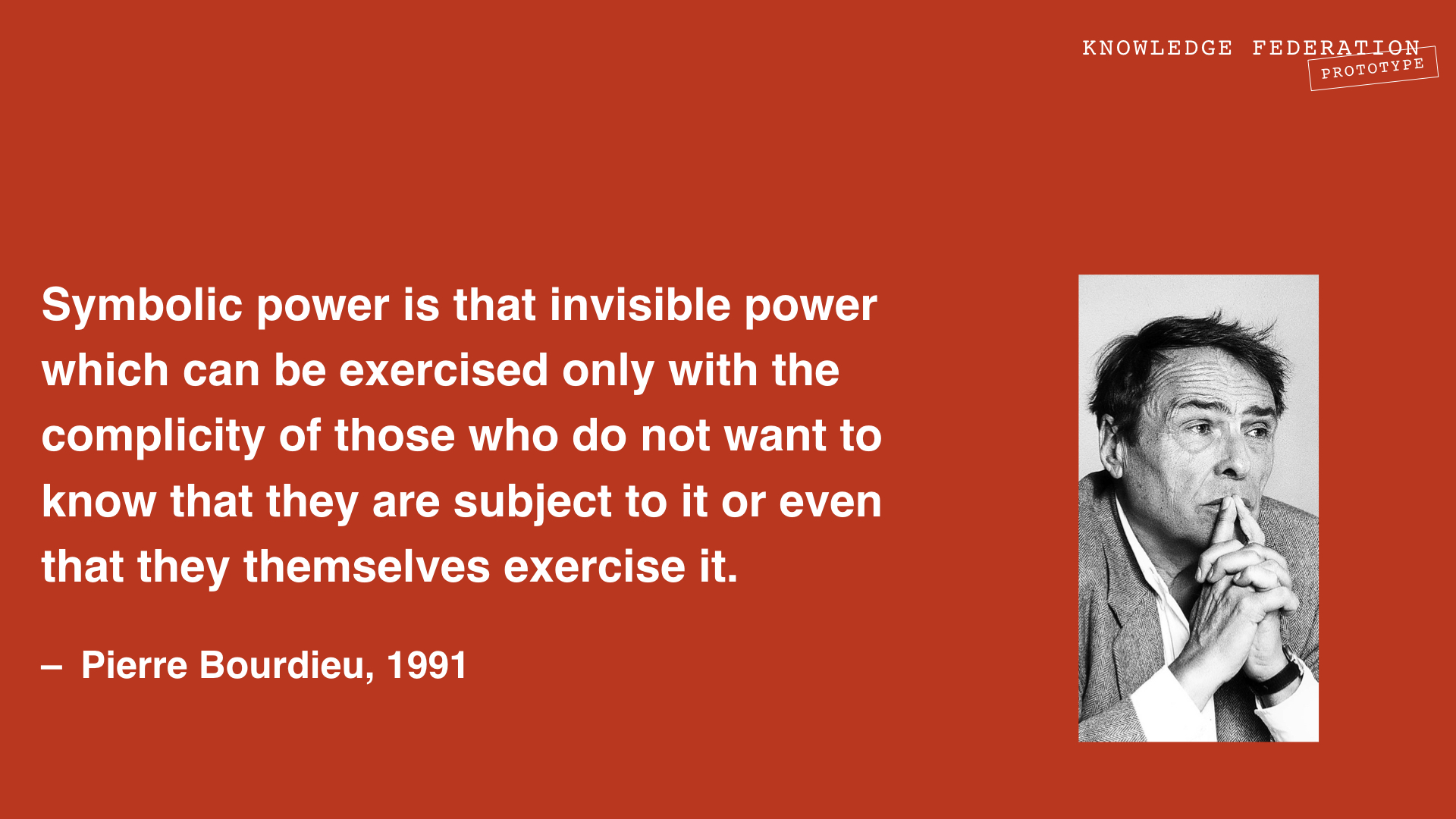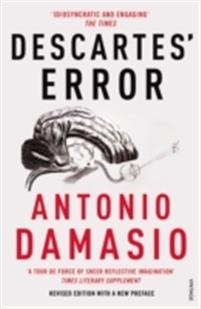Difference between revisions of "Holotopia: Socialized reality"
m |
m |
||
| Line 113: | Line 113: | ||
<p>Bourdieu's sociological theories synergize most beautifully with an all-important insight <em>experimentally</em> proven by cognitive neurosurgeon Antonio Damasio.</p> | <p>Bourdieu's sociological theories synergize most beautifully with an all-important insight <em>experimentally</em> proven by cognitive neurosurgeon Antonio Damasio.</p> | ||
<p>Damasio contributes a point—deftly coded into the very title of his book "Descartes' Error"—that we are not rational decision makers. The very contents of our rational mind (our priorities, and <em>what options</em> we are at all capable to conceive of and consider) are controlled by a cognitive filter—which is pre-rational. And <em>embodied</em>.</p> | <p>Damasio contributes a point—deftly coded into the very title of his book "Descartes' Error"—that we are not rational decision makers. The very contents of our rational mind (our priorities, and <em>what options</em> we are at all capable to conceive of and consider) are controlled by a cognitive filter—which is pre-rational. And <em>embodied</em>.</p> | ||
| − | <p>Damasio, in other words, explained why we don't get up wondering whether we should take off our pajamas and run out into the street naked (although this may be completely normal in some completely different culture). Our <em>embodied</em> "reality" controls the very content of our rational mind! | + | <p>Damasio, in other words, explained why we don't get up wondering whether we should take off our pajamas and run out into the street naked (although this may be completely normal in some completely different culture). Our <em>embodied</em> "reality" controls the very content of our rational mind! </p> |
| + | <p>Please <em>do</em> read the brief but centrally important anecdotal illustration of Damasio's all-important scientific insight, which we provided [https://holoscope.info/2020/01/01/tesla-and-the-nature-of-creativity/#Damasio here].</p> | ||
</div> | </div> | ||
Revision as of 09:36, 2 June 2020
Contents
H O L O T O P I A: F I V E I N S I G H T S
Socialized reality
The Enlightenment was before all a change of epistemology. An ancient praxis was revived, which developed knowledge of knowledge. On that as foundation, a completely new worldview emerged—which led to "a great cultural revival", and to comprehensive change. On what grounds could a similar chain of events begin today?
From the traditional culture we have adopted a myth incomparably more subversive than the myth of creation. This myth now serves as the foundation stone, on which the edifice of our culture has been constructed.
Stories
"Reality" is a myth
How to begin a cultural revival
We have come to the pivotal point in our story.
We talk about "Galilei in house arrest" to illustrate a central point—When our idea of "reality" changes, everything else changes as a consequence and most naturally. We asked, rhetorically, "Could a similar advent be in store for us today". We shall here see an affirmative answer to this question.
The theme is central; we shall take it as concisely as we are able, without sacrificing the rigor and the necessary details.
Language, truth and reality
We (as society, and as academia) have made a grave but understandable and forgivable error. This error now needs to be corrected.
This error can easily be understood when we consider how much the belief that "truth" means "correspondence with reality" is ingrained in our 'cultural DNA'; and even in our very language. When I write "worldviews", my word processor underlines the word in red. Since there is only one world, there can be only one worldview—the one that corresponds to that world. The word "worldview" doesn't have a plural.
A consequence is another error—the belief that a "normal" person sees the "reality" as it truly is. That "good", "true" or "scientific" information is the information that shows us a piece of that reality, so that we may ultimately know "reality" completely.
We are about to see that this myth is what holds us back from engaging in "a great cultural revival", which is overdue. And that relevant academic insights, which update our knowledge of knowledge, demand that we abandon this myth.
It will follow that "a great cultural revival" will follow naturally from the knowledge we own—as soon as we do our academic job right.
"Correspondence with reality" cannot be verified
In this very concise prototype sketch of the holotopia and the holoscope, Einstein plays the role of an icon of modern science. Our goal being to create, propose and put to use a federation procedure that can take us all the way to "a great cultural revival", we say "let's assume that Einstein did the necessary federation" (which we as culture eventually need to be able to do) and we let him be the spokesman for "modern science".
In "Evolution of Physics", Einstein and Infeld explained why "correspondence to reality" cannot be rationally verified, by using the parable of a closed watch. Einstein, furthermore, held the position that the belief that the results of our speculation or reflection correspond to reality is a common product of illusion. Both arguments are summarized and commented [here].
Since our goal is not to give a new "objectively true reality picture", but only to submit a legitimate way of looking at our theme, nothing more needs to be said.
Why found our culture on a myth?
We define myth as a popularly relied on but unverified belief, which has certain social and psychological purposes.
Our task being to find a solid foundation stone for developing a culture, or in other words a criterion for distinguishing "truth" (that is, "good" information or knowledge) from illusion, deception and conceptional mayhem, we must ask—Why use a criterion ("correspondence with reality") that cannot be verified? And which is itself a product of illusion?
"Reality" is an instrument of socialization
"Reality" is a construction
Researchers showed that what we call "reality" is constructed by our sensory organs and our culture; understanding the existence, the nature and the consequences of this construction provides us most valuable clues clue for evolving further.
We illustrate this point by a few references.
Evidence from natural sciences
In the 19th century it was natural to consider the human mind as a camera obscura—a perfect recording device, which reflects the outside world in an objective sense. But in the 20th century the researchers were able to looked into the supposed camera. They reached a completely different conclusion. We represented them by Humberto Maturana and Jean Piaget, see our commentary that begins here.
Evidence from sociology
Here Pierre Bourdieu's keyword doxa will provide us the clue we need.
Bourdieu adopted from Max Weber, and whose usage dates all the way back to Plato (which suggests that doxa is profoundly connected with the academic tradition—a point we shall come back to later). the academia's history, which we'll come back to. Bourdieu uses this keyword to point to the experience—that the societal order of things we happen to live in constitutes the only possible one. "Orthodoxy" leaves room for alternatives, of which ours is the "right" one. Doxa ignores even the possibility of alternatives.
Another point of reference is Berger and Luckmann's classic "Social Construction of Reality", where a theory of the process of social reality construction is contributed (see it commented here). Their keyword "universal theory" deserves a special attention—as an explanation how "reality" has served, historically, to legitimize given power relationships and social order.
Socialization in theory
Federation vs. socialization
We shall here improvise a theory of socialization—and offer it as a stepping stone for building the holotopia. In our opus, and notably in The Paradigm Strategy poster, this theory is represented by .
On The Paradigm Strategy poster, which was a predecessor to holotopia (described here), the mechanism of socialization is represented by a tread comprising three vignettes, represented by their chief protagonists Odin the Horse, Pierre Bourdieu and Antonio Damasio (which we outlined here). In what follows we highlight the main ideas.
Odin the Horse
The longer story will illustrate the turf behavior of Icelandic horses living in nature, by describing a concrete event. We here only highlight the image of two horses in spectacular and manly body-to-body interaction, running side by side with their long hairs and hairy tails flagging in the wind, Odin the Horse pushing New Horse toward the river, and away from his herd of mares.
Bourdieu and Symbolic Power
We'll need two points from Bourdieu's theory of "symbolic power", the first of which is presented by the card above: Symbolic power tends to be invisible and ignored by everyone concerned!
A story illustration, which we have not told in sufficient detail yet, is about Bourdieu in Algeria, during Algeria's war against France for independence, and immediately after. There the circumstances allowed Bourdieu to observe how power morphed—from the traditional censorship, torture and prison during the war, to symbolic power following the independence.
To see what this all means, imagine a young Kabylian man who, driven by economic necessity, moved from his village to a city—and who promptly finds out that his entire way of being, which back home served him well, here makes him all but dysfunctional. Not only his sense of honor, but even his very way of walking and talking seem unappealing even to the young women who moved from his home village—who saw something else in the movies and the restaurants.
Bourdieu was reminded of his own experience—when he arrived to Paris, as an unusually gifted "hillbilly", to continue his education.
The second point we need from Bourdieu is highlighted by the cover of his book "Language & Symbolic Power", shown on the right.
The point is that not only are relationships of empowerment and disempowerment deeply coded in our language or more generally "culture"—but that this language is "symbolic", or pre-rational. And indeed, on the cover of the book we see a turf. In Odin the Horse story the turf was a physical piece of land that Odin was defending. But in a culture, the structure of the 'turf' is not only symbolic, but also far more complex—as much as our culture is more complex than the culture of the horses. Yet in spite of that, the similarity is striking—when we observe that the power relationships are neatly organized in space, in a manner that corresponds to their organization in the idea world; in our social "reality".
The king enters the room, and everyone bows. Naturally, you do that too. By nature and by culture, we humans are predisposed to do as others. Besides, something in you knows that if you don't bow down your head, you might lose it.
What is it, really, that makes the difference between "a real king", and an imposter who "only believes" that he's a king? Both consider themselves as kings, and behave accordingly. But the "real king" has the advantage that everyone else has been socialized to consider him as that.
While a "real king" will be treated with highest honors, an imposter will be incarcerated in an appropriate institution. Even though a single "real king" might have caused more suffering and destruction than all the imposters, and indeed all the historical criminals and madmen.
From Bourdieu's theory we'll highlight only two more of his keywords: habitus and field (which he also called "game"). The habitus is a set of embodied predispositions, manners of thinking and behaving. The king has his own habitus, and so does the page. Think of the habitus as a cultural "role", analogous to a role in a theatre play. But you must also see it as a power position. Think of the field as a "culture" of a certain social group (a king's court, an academic discipline...), where through innumerably many carrots and sticks everyone gets "put into his place". On the symbolic 'turf'.
Damasio and "Descartes' Error"
Bourdieu's sociological theories synergize most beautifully with an all-important insight experimentally proven by cognitive neurosurgeon Antonio Damasio.
Damasio contributes a point—deftly coded into the very title of his book "Descartes' Error"—that we are not rational decision makers. The very contents of our rational mind (our priorities, and what options we are at all capable to conceive of and consider) are controlled by a cognitive filter—which is pre-rational. And embodied.
Damasio, in other words, explained why we don't get up wondering whether we should take off our pajamas and run out into the street naked (although this may be completely normal in some completely different culture). Our embodied "reality" controls the very content of our rational mind!
Please do read the brief but centrally important anecdotal illustration of Damasio's all-important scientific insight, which we provided here.
Damasio's theory completes Bourdieu's "theory of practice", by contributing the physiological mechanism by which the body-to-body socialization to conform to a given "habitus" extends into a doxa—that the given order of things, including our habitus, is just "reality".
Our key point
We have all been socialized to live in the "reality" where some are winners (kings) and others losers (serfs). But another way to see this is possible—where all of us are losers! And where the whole absurd game is indeed a result of a pathological and atavistic human tendency—to seek domination over others.
Odin the Horse does not "really" need all "his" mares. On the contrary. The reason why the farmer decided to introduce New Horse was that Odin was getting too old. So another social "reality" may be incomparably better for everyone. But Odin does not see any of that. In his primitive horse mind, he only sees that New Horse is intruding into "his" turf, threatening to privatize some of "his" mares, and Odin was going to stop that at all cost.
But we the people have a whole other side of our nature; pointed to, coincidentally, by Odin's very name. But let's talk about this a bit later.





